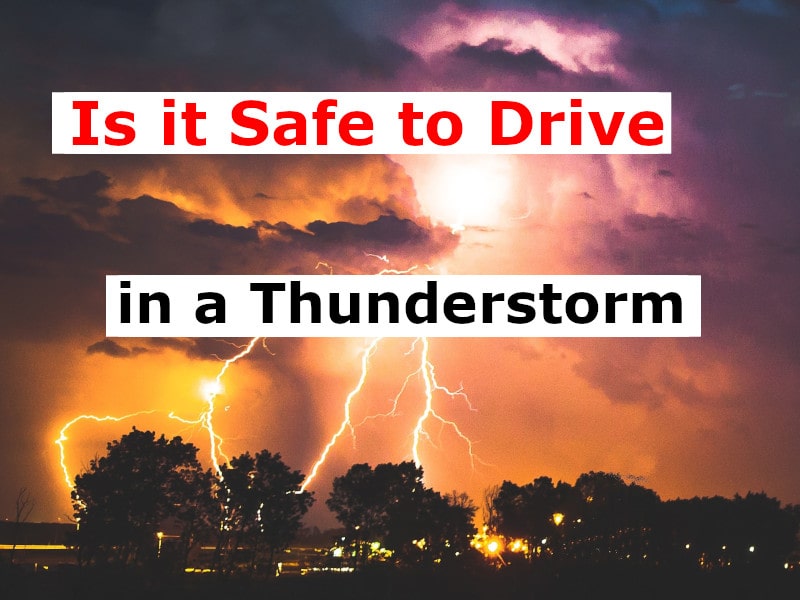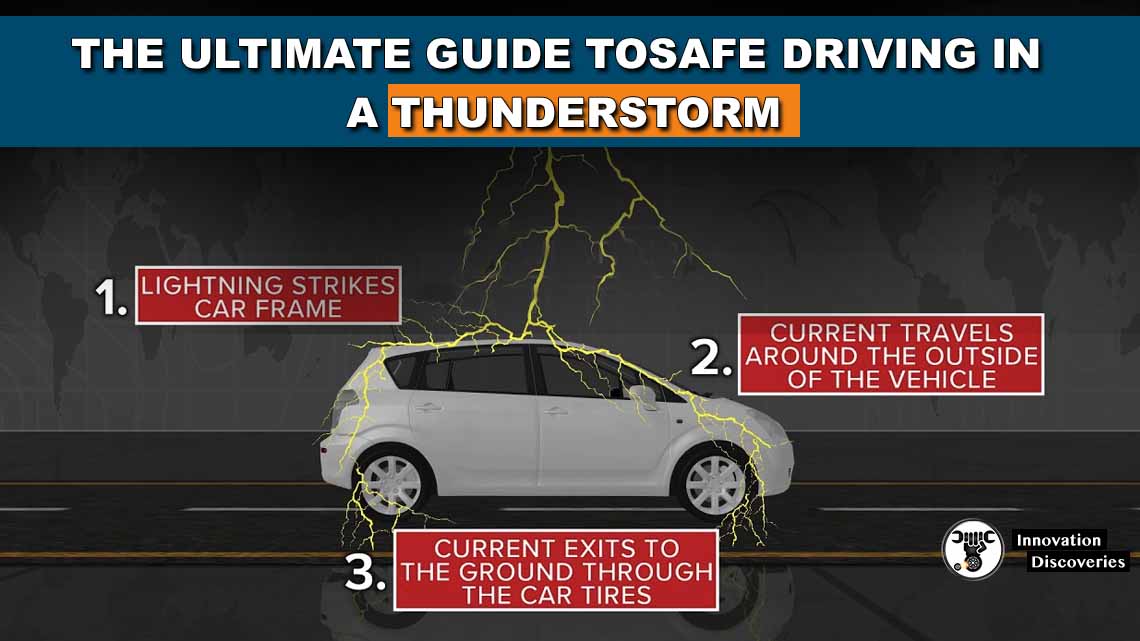Even just a few inches of water can cause your car to hydroplane, losing contact with the road and reducing your ability to steer or brake. Sometimes, they can also be accompanied by strong winds, heavy rain or hail. While on the one hand, it makes little sense for an electric car manufacturer to put out a vehicle that will inevitably fail, as long as thunderstorms exist and drivers must drive in them.
The Ultimate Guide To Safe Driving In A Thunderstorm CAR FROM JAPAN
No, conditions during a thunderstorm are usually quite bad for driving so try to avoid unless it’s an emergency.
If you are already on the road during thunder and lightning, it is best to find somewhere safe to park up off the highway, wind up your windows and stay inside.
Each year, about 300 people in the u.s. Are struck by lightning, according to the national oceanic and atmospheric administration.while roughly 90 percent survive their injuries, it’s still a A dust storm warning is issued when visibility of 1/2 mile or less due to blowing dust or sand, and wind speeds of 30 miles an hour or more; A severe thunderstorm watch is issued when severe thunderstorms are possible in and near the watch area.
Winds 58 mph or higher and Airborne debris can be dangerous. Also, watch out for water on the road. Never try to drive through moving water and avoid driving through standing water if at all possible.

If you absolutely must drive through standing water, use extreme caution.
When it’s time to stop driving. When the weather gets very severe, it’s almost always best to stop driving if you can. Every year, the uk and ireland typically experiences between 200,000 and 300,000 lightning counts, with 10,000 per day quite normal during a particularly bad storm. But despite being a relatively common weather phenomenon, there are plenty of myths surrounding lightning.
The most important factor that determines whether it is safe to drive in a storm is the severity of the storm, as well as the driver’s skill. If the rainfall is so intense that it hampers your visibility, or if it is accompanied by something like a hailstorm, the best thing you could do is refrain from driving until the intensity drops a few Not to mention almost coming to a stop at railroad tracks. Heading home to fort worth, texas and i drive strait in to this wicked storm with very heavy rain, crazy lightning and strong winds.

While driving through a thunderstorm can be dangerous, is it worse than a snowstorm in the gem state?
Snowstorms can make it impossible to see more than a foot in front of your car, leaving the driver to go towards the unknown. Within 20 miles of the core of a thunderstorm, in the leeward direction, you can encounter hail. Lightning is deadly and nothing to be messed with. Wind shear can be amazing to witness, and can knock, even the most experienced rider, on their ass.
As a thunderstorm dissipates, microburst activity is likely, which is a huge downrush of air. Driving in thunderstorms is not recommended, as heavy rain causes reduced visibility in addition to slippery roads (and therefore, heightened potential for a car accident). No one can dispute the beauty of a thunderstorm, but the fact is, driving in one can be hazardous. Driving through standing water on the road during a thunderstorm is extremely dangerous and should be avoided at all costs.

Even just a few inches of water can cause your car to hydroplane, losing contact with the road and reducing your ability to steer or brake.
Thankfully, if you know what to never do during a thunderstorm, you can stay safe. Thunderstorms are most common during the summer months, thanks to high levels of humidity. In fact, 73 percent of lightning deaths occur in june, july, and august, according to the centers for disease control and prevention (cdc). The best thing to do when a severe thunderstorm hits while you’re driving is to find a safe place to pull off the road away from other drivers and from pooling water.
Rain is the most dangerous part of the thunderstorm, but it’s important to take precautions against lightning and wind, as well. You’ve probably heard it’s safe to be in your car during a thunderstorm because you won’t get hurt if lightning strikes the car. First off, while many people think it’s the rubber tires that protect a car from lightning, it’s actually a myth. Thunderstorms present a bunch of potential dangers to a driver, including high winds, heavy rain, flooding, lightning, and even hail.

According to the american safety council, the average thunderstorm lasts just 30 minutes.
If it’s at all possible to wait for the storm to pass before driving, that’s your safest bet. While driving in a thunderstorm, you may still encounter impatient drivers who tailgate, pass, or speed during the storm. You may also have nervous drivers or just more drivers due to congestion. With reduced traction and visibility, simply driving behind someone can become a dangerous challenge in a thunderstorm.
Lightning often strikes more than three miles from the center of the thunderstorm, far outside the rain or thunderstorm cloud. A lightning victim is electrified. If you touch them, you’ll be electrocuted. The human body does not store electricity.
Your employer must agree that the weather is too dangerous for driving.
Otherwise, your employer has the right to fire or otherwise discipline you for not coming to work. When businesses close for bad weather. If weather is so bad that businesses must close, it is important to know what to expect when it comes to pay. For some this might be the most irritating and dangerous factor of driving in a storm.
Nervous drivers, or even worse, impatient drivers trying to outrun the storm, may drive very fast, tailgate or pass without proper signaling. No matter how big or how small, all thunderstorms are dangerous because they produce lightning, which should never be underestimated.